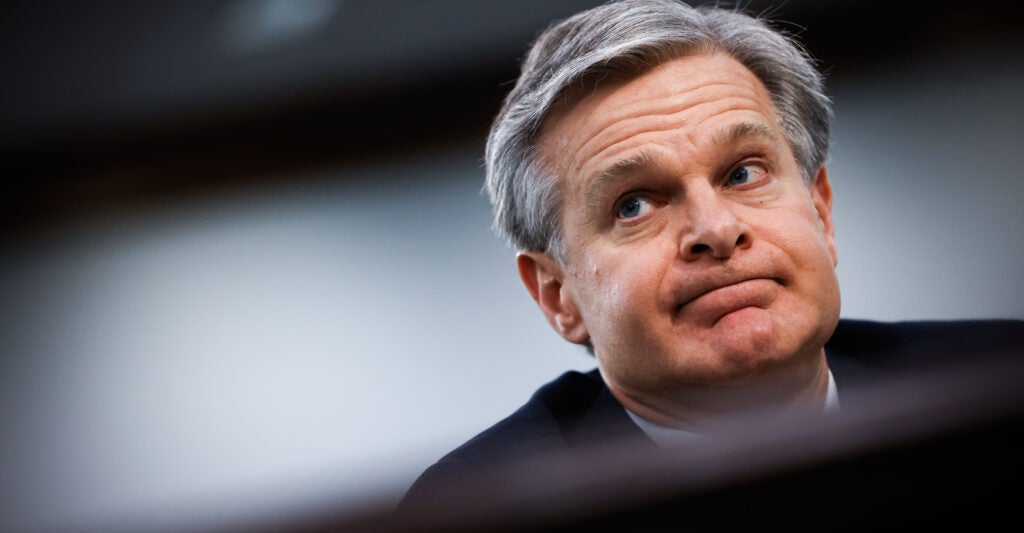Editor’s note: The FBI says former President Donald Trump was struck in the right ear July 13 by a bullet or a piece of one, moving to clarify what happened after nearly two weeks of conflicting accounts, The Associated Press reported shortly after 7 p.m. Friday.
DAILY CALLER NEWS FOUNDATION—Rep. Ronny Jackson, R-Texas, a former White House physician with direct knowledge of Donald Trump’s wounded right ear, disputes FBI Director Christopher Wray’s questioning of whether a bullet struck the former president in the assassination attempt.
Wray said that “there’s some question” whether Trump got hit by “a bullet or shrapnel” during the July 13 assassination attempt in testimony Wednesday to the House Judiciary Committee about the FBI’s investigation of the shooting at a campaign rally in Butler, Pennsylvania.
Jackson released a statement Friday saying there is “absolutely no evidence” anything other than a bullet injured Trump’s upper right ear.
“During the Congressional Hearing two days ago, FBI Director Christopher Wray suggested that it could be a bullet, shrapnel, or glass,” Jackson wrote. “There is absolutely no evidence that it was anything other than a bullet. Congress should correct the record as confirmed by both the hospital and myself. Director Wray is wrong and inappropriate to suggest anything else.”
Jackson said he has treated many gunshot wounds throughout his 20-year career as an emergency medicine physician in the Navy and as a combat physician in Iraq.
He wrote that he can “completely concur” with the initial assessment and treatment provided to Trump at Butler Memorial Hospital, where he was treated for a gunshot wound to the ear.
Wray testified to the House Judiciary Committee that Trump’s would-be assassin, 20-year-old Thomas Matthew Crooks, used a semiautomatic AR-15-style rifle with a collapsible stock during the shooting. Trump, surrounded by Secret Service agents, exited the rally with blood dripping down his face.
“I think with respect to former President Trump, there’s some question about whether or not it’s a bullet or shrapnel that, you know, that hit his ear,” Wray testified Wednesday. “As I sit here right now, I don’t know if that bullet, in addition to causing the grazing, also could have landed somewhere else.”
A photograph taken during the shooting by The New York Times’ Doug Mills shows a bullet flying directly by the right side of Trump’s head just moments before he began bleeding.
Crooks fired eight rounds, killing former volunteer fire chief Corey Comperatore and wounding two other rally attendees, authorities said. The gunman climbed onto the roof of a building unoccupied by authorities and 130 feet away from the rally stage.
The Secret Service and the FBI told lawmakers Wednesday that authorities noticed Crooks approximately 50 minutes before Trump came onstage. One source told senators that Crooks was spotted with a rangefinder, while others said they saw him standing on the rooftop with a firearm about 20 minutes before bullets were fired.
Bipartisan questions about how the incident occurred led former Secret Service Director Kimberly Cheatle to resign from the agency Tuesday following a tense hearing Monday before the House Oversight Committee.
Oversight Chairman James Comer, R-Ky., and ranking member Jamie Raskin, D-Md., issued a joint statement Monday following the hearing calling for Cheatle’s resignation and stating that she “failed to provide answers” about the “stunning operational failure” during the rally.
MSNBC’s Michael Steele and Ari Melber both raised questions about the details of Trump’s wounded ear. Steele said July 16 that “a lot of questions” surround Trump’s injury, while Melber suggested the bandage on the ear was a “political quest” to gain sympathy and clout.
In a July 17 post on Threads, MSNBC anchor Joy Reid suggested that flying glass may have injured Trump.
The FBI didn’t immediately respond to a request for comment from the Daily Caller News Foundation.
Originally published by the Daily Caller News Foundation
